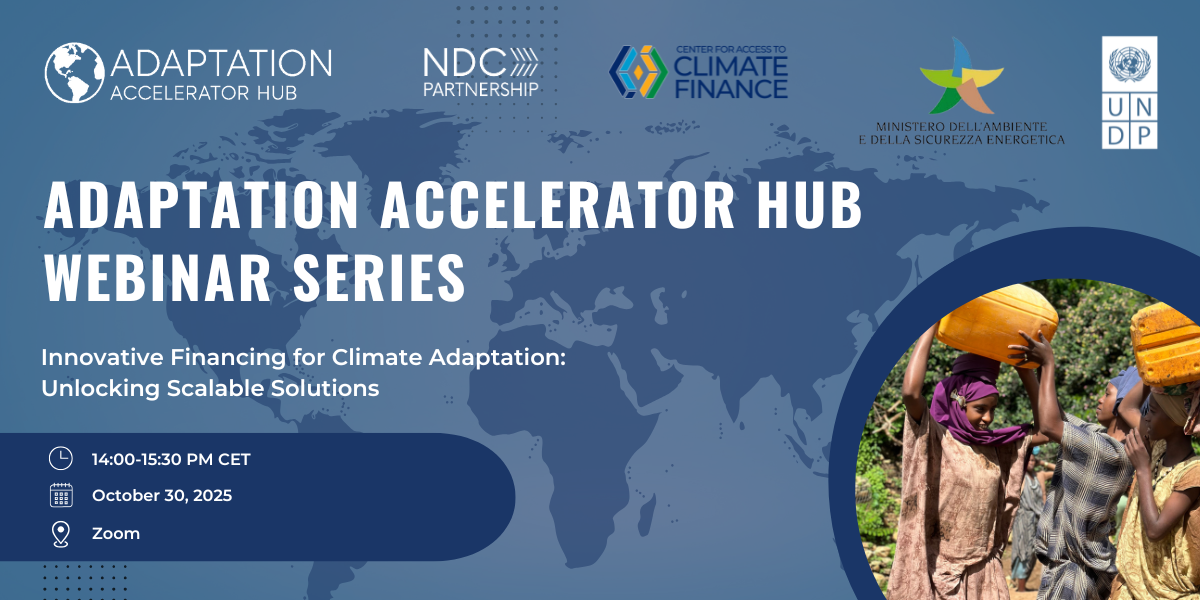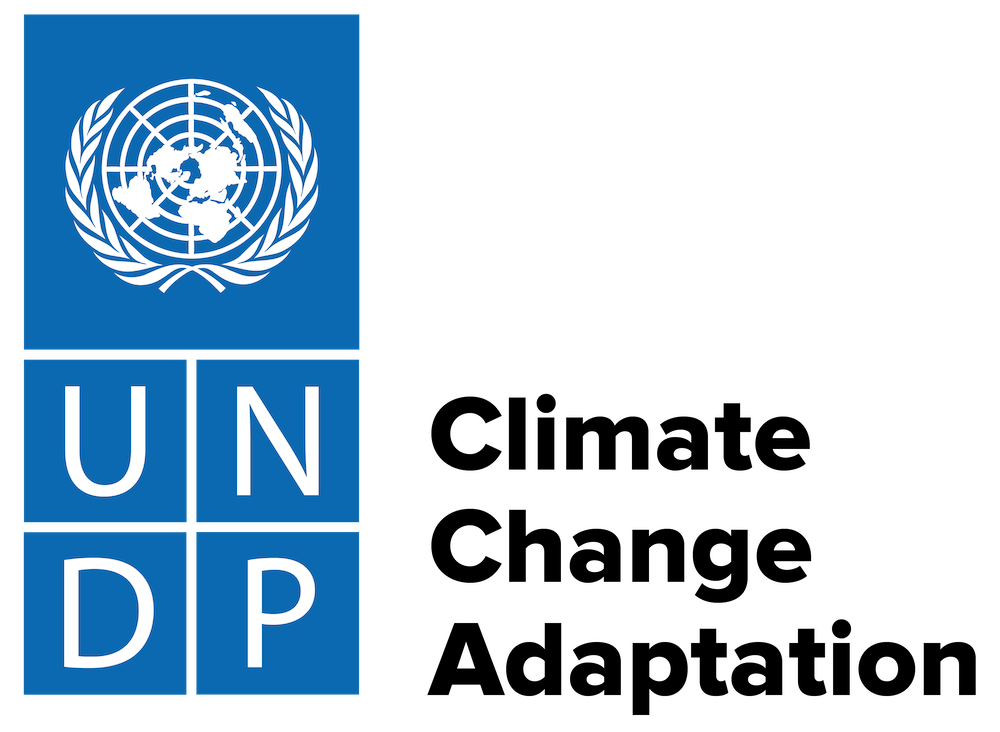
Date: Thursday 30 October
Time: 14:00-15:30 CET
Climate change is already impacting every region of the world, with rising temperatures, shifting rainfall patterns and increasingly frequent and severe extreme weather events. These impacts are placing immense pressure on livelihoods, ecosystems, and economies, particularly in vulnerable countries and communities that have contributed the least to greenhouse gas emissions.
Adaptation is no longer optional but an urgent necessity. According to the UNEP Adaptation Gap report 2024, international public adaptation finance flows to developing countries increased from US$ 22 billion in 2021 to US$ 28 billion in 2022, the largest absolute and relative year-on-year increase since the adoption of the Paris Agreement. This underscores progress towards the Glasgow Climate Pact, which called on developed nations to at least double adaptation finance to developing countries — from approximately US$19 billion (2019 levels) — by 2025. However, achieving the Glasgow Climate Pact goal would only reduce the adaptation finance gap, which is estimated at US$ 215-387 billion per year, by about 5 per cent. The current adaptation finance gap threatens to undermine global progress towards the Paris Agreement and the Sustainable Development Goals (SDGs).
Alongside public and concessional finance, innovative financing instruments are essential to closing the adaptation finance gap. Grants and highly concessional resources are indispensable to de-risk investments, support project preparation, and fund early-stage innovations where commercial returns are limited. By absorbing risks and lowering costs, they create the conditions for private capital to flow into resilience-oriented sectors.
Blended models that combine concessional support with market-based instruments are showing strong potential. Climate-resilient debt clauses, resilience bonds, debt-for-adaptation swaps, risk-sharing facilities, and results-based mechanisms can all mobilize investment while linking finance to measurable resilience outcomes. Concessional finance reduces borrowing costs, expands fiscal space, and underpins insurance and risk-transfer schemes that would otherwise remain unviable.
These structures make adaptation investable. Public and philanthropic capital lowers transaction costs and crowds in private investors, particularly in vulnerable markets where risks are high and financial returns are uncertain. Innovative finance therefore ensures that capital flows reach the communities most exposed to climate change impacts while supporting long-term economic stability.
Building on the High-Level Solutions Dialogue on Climate Change Adaptation, convened by the UN Secretary-General with partners on 22 September 2025, this webinar - held under the auspices of the Adaptation Accelerator Hub - looked at how innovative finance can be scaled and replicated. The webinar included practical cases and emerging tools, and fostered dialogue among governments, development banks, private investors, and civil society on actionable pathways to bridge the adaptation finance gap.
Webinar objectives
- Enhance understanding of innovative financing mechanisms for climate adaptation, by sharing good practice and how to overcome barriers.
- Strengthen the capacity of stakeholders — including governments, development partners, private sector actors, and civil society — to identify, design, and access innovative adaptation finance.
- Facilitate dialogue and partnerships among diverse actors to bridge the adaptation finance gap and promote scalable, sustainable solutions.
- Promote actionable pathways for mobilizing resources and channeling them effectively to vulnerable communities most at risk from climate change impacts.
Webinar recording
Presentations
Innovative Financing for Climate Adaptation: Unlocking Scalable Solutions Risk Finance and Insurance
The Adaptation Finance Strategy Guideline
UNDP's Climate Change Adaptation portfolio and the G7 Adaptation Accelerator Hub (AAH)
About UNDP
UNDP is the largest provider of technical support to countries on NDCs and NAPs. Under the Climate Promise, UNDP delivers the largest climate portfolio in the UN system, supporting climate action in more than 140 countries by delivering a portfolio of over US$2 billion in grant financing. As part of this work, UNDP supports over 50 countries in planning and policy for climate change adaptation through the National Adaptation Plan (NAP) processes. Importantly, this portfolio leverages strong links with UNDP’s expertise on gender equality, energy, nature, poverty, health, finance, and climate security, among others.
